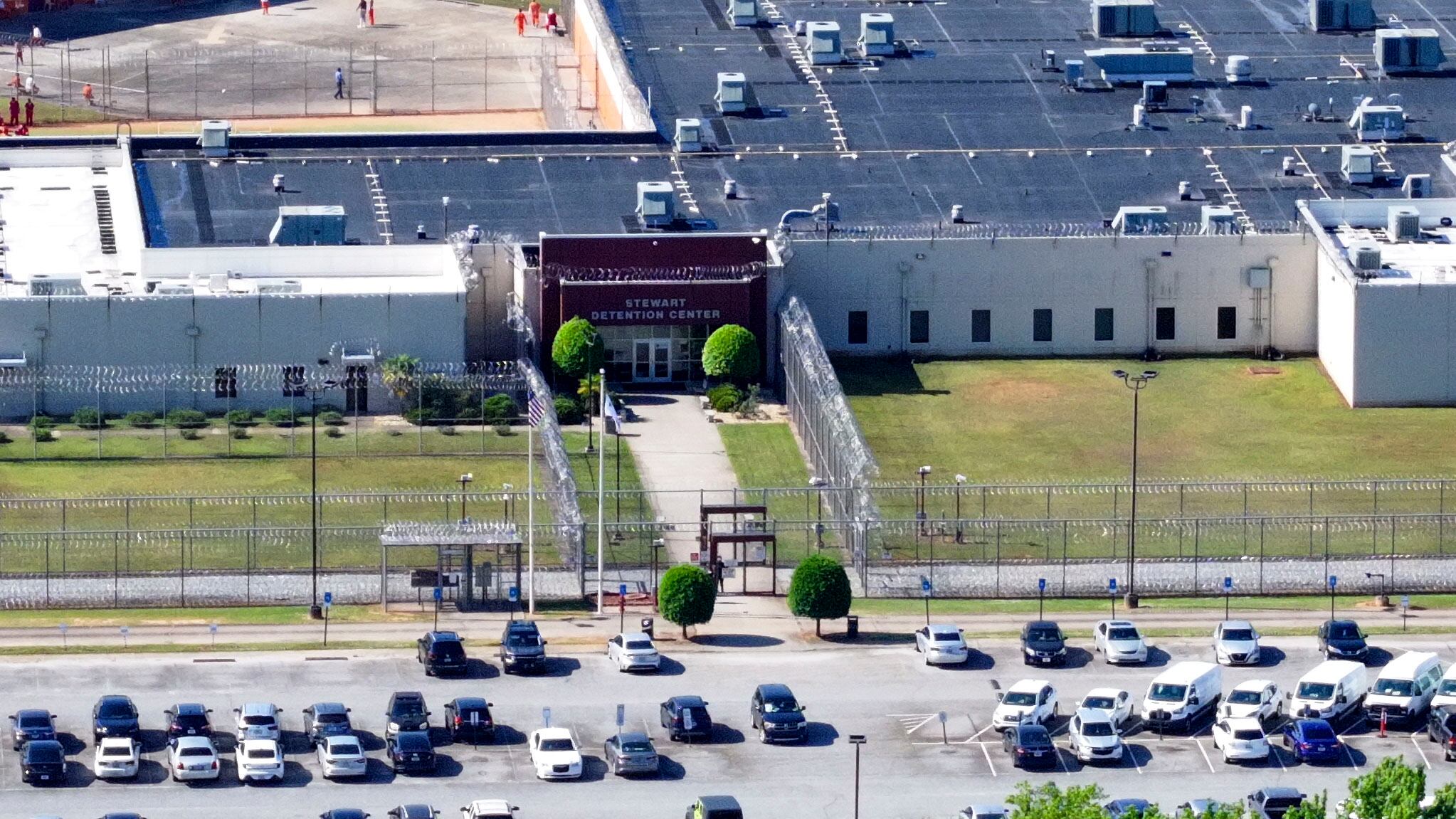In June, Molina-Veya’s death was notified by immigration officials. The results of an investigation into his time in jail prior to his death were made public earlier this month.
ICE verified that Molina-Veya did receive a mental health screening in May, immediately after his arrival at Stewart, in contrast to the Missouri immigrant detainee who also died by suicide in 2025. According to the ICE report, he had previously denied having thoughts of suicide, abusing drugs, and having mental health issues.
According to the ICE investigation, workers discovered Molina-Veya unconscious less than a month after the mental health screening, with a fabric ligature around his neck fastened to the top bunk’s bottom rail.
It took about three minutes from the moment a medical issue was announced until a staff member dialed 911.
According to a call tape that The Atlanta Journal-Constitution was able to obtain, the staff member informed the 911 dispatcher, “We got a hanging (undiscernible).”
A man in a hanging position? The dispatcher responded. A man tried to end his life. Does he have a pulse?
“No,” the caller answered.
According to documents the AJC was able to obtain, emergency personnel arrived in about nine minutes. According to the ICE investigation, by that time, Stewart staff had cut the cloth over Molina-Veya’s neck and lowered him to the ground, where they performed cardiopulmonary resuscitation.
Molina-Veya was taken to Phoebe Sumter Medical Center in Americus by emergency medical services. He was declared deceased by the local medical professionals.
Mexican President Claudia Sheinbaum was informed of Molina-Veya’s passing while in the custody of ICE.During a press conference, she said that her government had asked for additional details regarding Molina-Veya’s health at the time of his passing.
Thanks to AP
Thanks to AP
According to Sheinbaum, we will always seek to ensure that Mexicans’ human rights are respected elsewhere.
Beginning in 1999, Molina-Veya entered the nation multiple times without permission, according to ICE. He was taken out on multiple occasions, most recently in 2007.
Molina-Veya was arrested and convicted of a number of offenses while in the United States, including child molestation, hit-and-run, and possession of prohibited narcotics, according to ICE. According to the agency, he was most recently arrested on February 28 for violating his probation and other violations.
Since ICE started holding immigrants at Stewart in 2006, there had been two verified suicide fatalities there prior to Molina-Veya’s death: Jean Carlos Jimenez-Joseph and Efrain Romero De La Rosa.
Due in part to ICE’s target of apprehending roughly 3,000 people per day, detainee deaths are on the rise nationwide as detention facilities become overcrowded. Nearly 60,000 people were being held by ICE as of mid-June, which is about 45% more than the number of beds Congress had previously allotted the agency.
Miguel Martinez-Jimenez is credited.
Miguel Martinez-Jimenez is credited.
“We stand united in our refusal to accept any more senseless deaths in detention and (in) our call to shut down Stewart,” said Amilcar Valencia, director of El Refugio, a nonprofit group based in Stewart County that supports immigrant detainees and their loved ones.
Valencia expressed his deepest sorrow to Jesus Molina-Veya’s family and laments his untimely death. Our thoughts and prayers are with those who are being held at Stewart, as another death serves as a sobering reminder of the brutality of a system that is unable to give even the most basic of care.
ICE will have the most funding of any federal law enforcement agency thanks to President Donald Trump’s Big, Beautiful Bill Act, which was signed into law earlier this month. The plan includes $45 billion for the next four years to enhance the immigrant detention system.
According to cost estimates, ICE could be able to retain over 100,000 inmates at any given time thanks to that infusion of resources.






